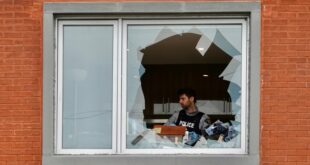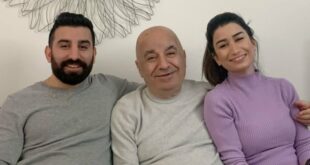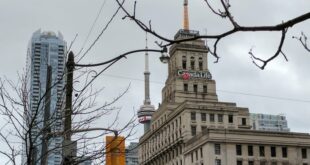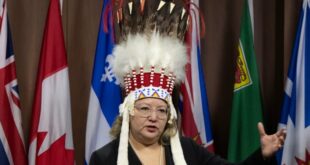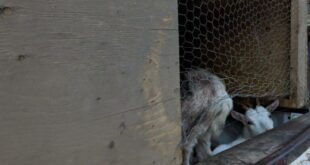An elementary school initiative that explores math concepts while incorporating Indigenous practices is making its way into classrooms across Canada. Recently, Guelph, Ont., students were elated to explore their creativity while designing and making beaded bracelets. Ontario’s Wellington Catholic School Board hosting the second half of its Métis-math collaborative project at St. John Catholic Elementary School in Guelph.
Students created bracelets under supervision of Métis knowledge keepers.

An elementary school initiative that explores math concepts while incorporating Indigenous practices is making its way into classrooms across Canada.
The Métis-math collaboration is part of a larger collection spearheaded by mathematics education researcher Ruth Beatty of Lakehead University in 2012. It’s called First Nations and Métis Math Voices.
“One of the main reasons we started this was so that First Nations students could see themselves reflected in classroom practice, particularly around math,” said Beatty, an associate professor in Lakehead’s faculty of education.
“We recognize that there’s so much mathematics that is part of Métis cultural practices and First Nations cultural practices. So we wanted to use that as a way of contextualizing math, making it meaningful for First Nations and Métis students, but also giving other students a chance to form relationships with community partners.”
The Wellington Catholic School Board recently hosted the second half of its Métis-math collaborative project at St. John Catholic Elementary School in Guelph, Ont.
Grade 6 students created bracelets using loom beading — a First Nations art form — and three Métis knowledge keepers led the class through the beading process.
During the first session in November 2023, students replicated a bracelet featuring a Métis-styled flower designed by Leslieanne Muma, one of the knowledge keepers.
On March 6, students designed their own bracelets and carried out the loom-beading exercise.
“We gave them some basic parameters of how many colours, or how many rows or coloumbs the bracelet should be,” said knowledge keeper Alicia Hamilton.
“The rest was from their imagination and creativity.”
Students used math concepts such as transformations, ratios and rates to plot their bracelets before physically making them.
“The neat thing about this second half is that we have changed the size of the beads, which means they have to recalculate all of their math again. We will be measuring their wrists again because it will be different,” said Jennifer Parkinson, another knowledge keeper who helped the children.
“So it really reinforces everything they’ve been learning all year.”
Hamilton added: “We even did math this morning with how many beads are in quarter teaspoon so they could come and say, ‘I need two quarter teaspoons or one-eighth of a teaspoon — things like that. So it’s really cool to see how you’re doing math without doing math.
“You’re doing math to achieve a goal, but it’s natural. It’s not the same as pencil and paper. You’re actually doing a practical skill and coming out with a practical result.”
Students explore their creativity
The children in the Guelph classroom were elated to explore their creativity during the process of designing and making their bracelets.
“It’s been great. It’s been really fun,” said Mark Adam. “Mine is the flag of the country that I come from — it’s the Hungarian flag.”
Another student, Eva Perumcheril, said: “My theme was kinda like a beach with a palm tree. I chose it because I just like the beach very much and the colours. I couldn’t find a brown, so I used copper instead.”
While some of the children were looking forward to wearing their new bracelets, Maelle Lumsden chose to gift hers to someone special.
“My design is for my nana and it’s a witch hat and a witch broom. I don’t know why I picked it. I just felt like she would like that.”
It’s not just about math
Although math is an important part of the initiative, Beatty said, the goal is to implement Indigenous beliefs and practices.
“There are so many cultural teachings that are interwoven through the project. It isn’t just about mathematical investigations, but it really is learning those important cultural lessons and teachings from knowledge keepers.”
It’s a notion that was echoed by all three knowledge keepers who visited the Guelph school.
“Before they even got to do Leslie’s bracelet, we went through Métis history and culture surrounding beading,” said Parkinson. “Loom beading is First Nations and we would have leaned it from our First Nations ancestors. Leslie adapted a Métis loom pattern, but they went through the history and significance of beading to the Métis people.”
Students also learn about self-confidence and that it’s OK to make mistakes.
“There’s a lot of math involved like measuring, and patterns and colours. But I feel like when you get to the beading part of it, they’re teaching you to be confident. If you mess up and you put on a wrong-coloured bead, they call it a spirit bead,” explained Kieran Livie, another student.
According to the knowledge keepers, Métis women used to purposely use incorrect-coloured beads in their work to remind them nobody is perfect.
“I have a spirit bead on mine and I wasn’t too happy about it because I thought it looked a little weird. Now that I’m looking back at it, it’s a mark that you made a mistake, so that’s actually not that bad,” said Lumsden.
The project also focuses on teaching children the value of materials.
“This is an Indigenous art. That’s why we don’t call it a craft, because it’s an art,” said Parkinson.
“It has meaning, it has purpose, and knowing the history, knowing the value of the beads. We teach how valuable materials are. Earlier, we had a spill of beads. Immediately, students stopped what they were doing around that area — stopped and helped that person pick everything up because those beads are valuable.”
“You should be thankful for what you have,” said Livie. “I think the math is very helpful because it teaches you skills and ways to work out problems, but a lot of it also is some great skills that we can use.”
Other provinces involved in the project
Anyone hoping to bring a similar project to their school board can contact Beatty, who said she’s delighted and in awe of how the collaboration has grown since 2012 — classrooms in other parts of Ontario, as well as in Manitoba, Saskatchewan and British Columbia have taken part.
“Its got this momentum which is really gratifying because I’ve been working in consultation with other First Nations communities and other school boards,” said Beatty. “But I’m not at the centre of it and our initial, original team, we’re not at the centre of it anymore. People are taking it on themselves and building these relationships with community, and doing these investigations around mathematics, but also really building relationships with community and centring those community teachings.”
Beatty said it’s important the project maintains its roots.
“I think the most important part of this work for me is the centrality of relationship building and the centrality of building good, trusting, reciprocal relationships with community, and not doing this work without community partners.”
More information on the national project can be found on the First Nations and Métis Math Voices website.
ABOUT THE AUTHOR

Reporter
After growing up in Waterloo Region, Karis Mapp obtained a diploma from the College of Sports Media. She has since spent time reporting for CityNews 570 and CTV Kitchener. Karis joined CBC K-W in February 2024 and is excited to explore the stories that mean the most to the community.
*****
Credit belongs to : www.cbc.ca
 Atin Ito First Filipino Community Newspaper in Ontario
Atin Ito First Filipino Community Newspaper in Ontario
